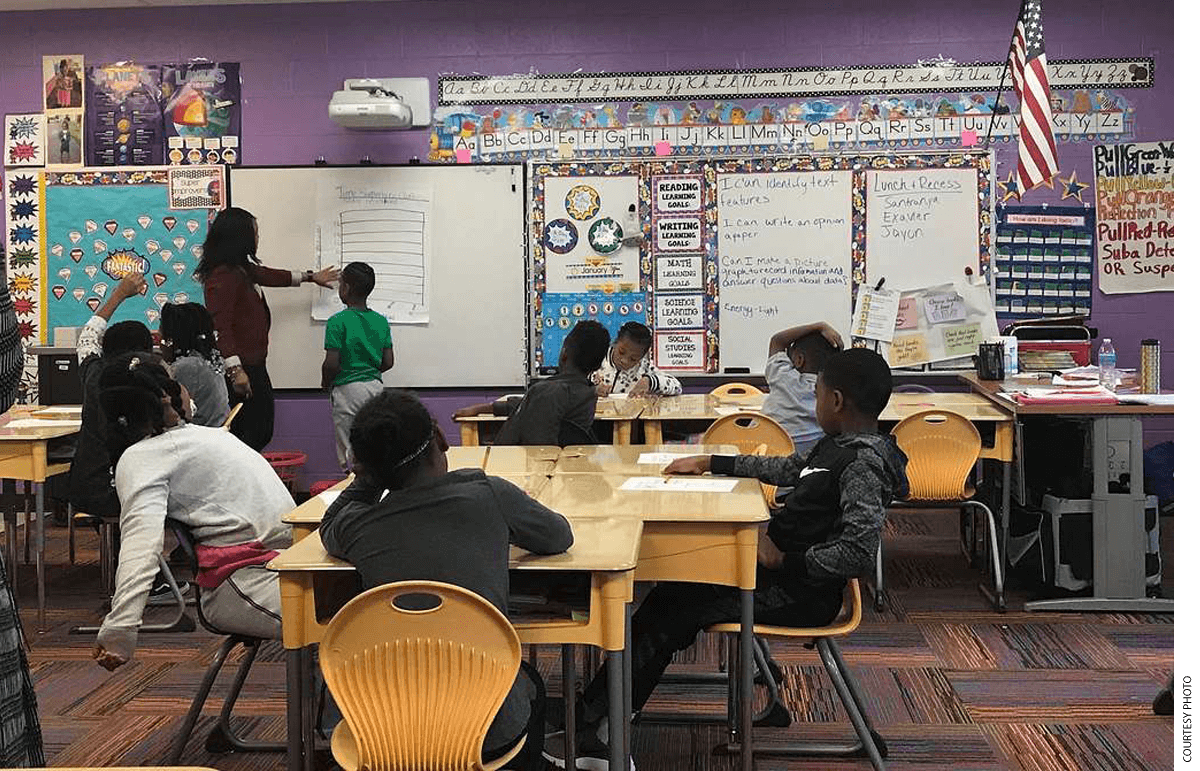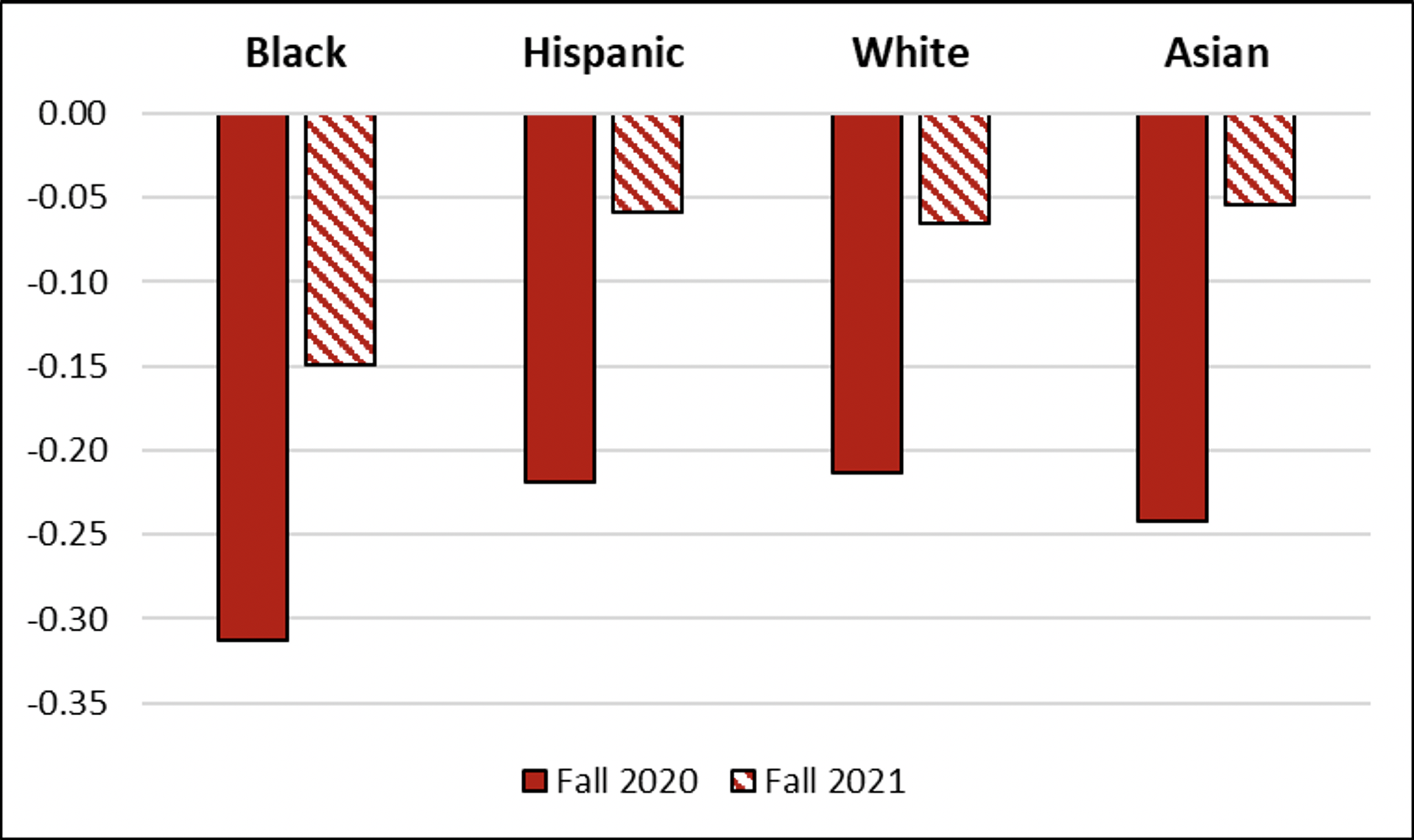
For much of the past year, growing evidence on pandemic learning losses painted a dire picture. Fortunately, the latest test data from Ohio suggest that we may have turned a corner, with students beginning to make up some of the ground lost.
Ohio was one of the first states to administer its official assessments in person in Fall 2020, and the results showed that third-grade students at the time were substantially behind earlier cohorts. Our latest report now adds another year of data, from Fall 2021, and finds much smaller shortfalls for the most recent cohort of third graders. Overall, the results provide grounds for some optimism about the trajectory of students’ academic recovery, but also suggest that the students hit hardest by pandemic learning disruptions have also made proportionately smaller gains since then, causing many inequities to persist.
One challenge to comparing student achievement over time is that the pandemic affected both test participation rates—causing them to fall substantially last year—and also the composition of students attending public schools, with enrollments declining in many places. It is thus important to isolate actual changes in student achievement from differences in the mix of students who are tested each year. Our analysis does so by applying statistical adjustments that account for observable student demographic characteristics as well as pre-pandemic differences in achievement as recorded on district-administered reading assessments in lower grades.
On the positive front, although current third graders remain significantly behind pre-pandemic cohorts, the magnitude of the gap has shrunk by nearly two-thirds from last year. Overall, third-grade test scores in Fall 2021 were about 0.08 standard deviations lower than the year before the pandemic, corresponding to between 1 and 1.5 months of learning. For some student subgroups—including English learners and students with disabilities—achievement has largely recovered to pre-pandemic levels.
Nevertheless, considerable gaps remain, especially among some of the most disadvantaged populations. Test scores of Black students remained 0.15 standard deviations lower in fall 2021 compared to this group’s pre-pandemic baseline, nearly double the size of the shortfall observed among their white peers. Black students also appear to have recovered a smaller share of the initial learning losses. In addition, the gap in urban districts remains larger than for other types of school systems.
Achievement Losses Compared to Pre-Pandemic Cohorts, Ohio Fall 3rd Grade English Language Arts Exams

And although Ohio schools have now largely returned to full-time in-person learning, the previous modes of instruction available to students remain associated with the impact of the pandemic on achievement. Students attending districts that spent most of last year in virtual learning continued to post lower average scores in the fall of the current school year.
There are two important caveats to these findings. First, Ohio’s fall exams cover only one grade and subject (3rd grade English language arts). As we saw last year, the impacts on spring math scores were generally larger on average than in reading, but the differences between student subgroups were also smaller. Second, the fall exams were completed prior to the Omicron wave in December and January, which resulted in widespread student and teacher absences and disrupted learning substantially for many.
Nevertheless, the latest data provide strong evidence that—with sufficient political will, effort, and resources—pandemic learning losses can be reversed, and reversed relatively quickly. They also highlight the importance of targeting our efforts on the students who remain most behind and ensuring that the various remediation programs actually reach the subgroups and populations who most need them.
Vladimir Kogan is associate professor in The Ohio State University’s Department of Political Science and (by courtesy) the John Glenn College of Public Affairs.


